Diagnostic and General characters, Botanical description, Floral Formula, Economic Importance - Family Musaceae – Banana Family | 11th Botany : Chapter 5 : Taxonomy and Systematic Botany
Chapter: 11th Botany : Chapter 5 : Taxonomy and Systematic Botany
Family Musaceae – Banana Family
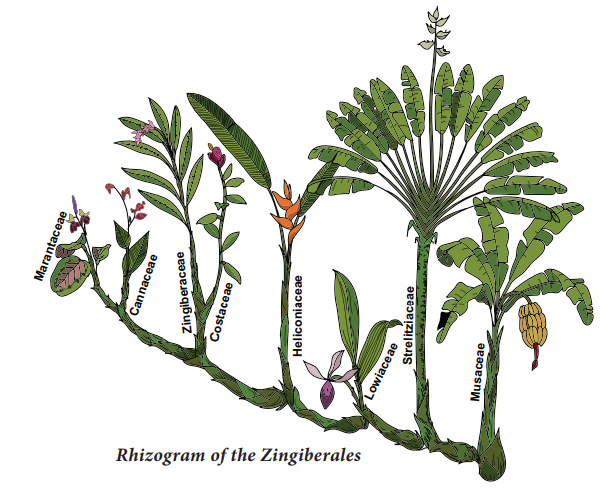
Family Musaceae
– Banana Family
Diagnostic Features
•
Perennial giant herbs with pseudostems formed by
leaf sheaths.
•
Leaves are large with thick midrib, parallel
venation.
•
Flowers are zygomorphic, unisexual, inflorescence
spadix covered by spathe.
•
Corolla 2 lipped.
•
Ovary tricarpellary, inferior.
•
Fruit elongated berry.
•
Septal nectaries are present.
Systematic Position
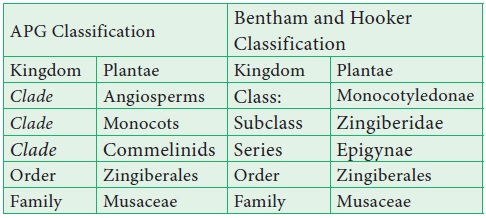
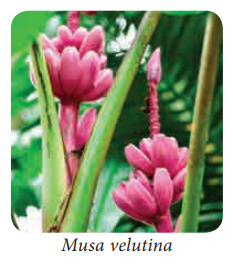
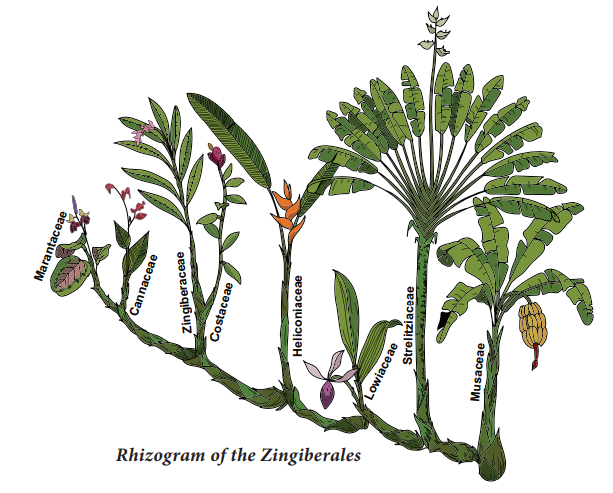
Note: Earlier Musaceae was a large
family with 6 genera viz. Musa, Ensete,
Ravenala, Strelitzia, Orchidantha and Heliconia . In APG only Musa and Ensete
are retained while Ravenala, Strelitzia,
Orchidantha and Heleconia are
separated.
General Characters
Distribution
Musaceae includes only 2 genera (Musa and Ensete) and 81 species. The members of this family are mainly wet
tropical lowlands from West Africa to Pacific (southern Japan to Queensland). (Musa is the most common plant of the
family found in India).
Habit: Large
perennial herbs perennating by means
of rhizome ( Musa paradisiaca), raraly trees as in Ravenala madagascariensis.
Root: Fibrous
adventitious root system.
Stem: In Musa the real stem is found underground called rhizomatous (dichotomously branching in
atleast some spp). The apparent aerial
erect, unbranched tall pseudostem is formed by the long stiff and sheathy leaf
bases which are rolled around one another to form an aerial pseudostem. The
central axis that is concealed at the bottom of the pseudostem in called shaft,
which elongates and pierces through the pseudostem at the time of flowering and
produces inflorescence terminally. monocorpic
in Musa. (produces flowers and fruits
once during its life time). Stem is aerial and woody in Ravenala madagascariensis.
Leaf: Simple
with long and strong petiole the
leaf blade is large and broad with sheathy leaf base. The leaf is exstipulate.
Oval, obtuse or oblong with a stout midrib, entire, numerous parallel veins
extending up to the margin, rolled in bud . Phyllotaxy is spiral in Musa and distichous i.e. leaves are
arranged alternately in two opposite vertical rows in Ravenala.
Inflorescence:
Terminal
or axillary thyrse of one to many
monochasial branched spadix in Musa,
Usually the flowers are protected by large brightly coloured, spirally
arranged, boat shaped bract called spathe. Compound cyme in Ravenala.
Flowers: Bracteate,
ebracteolate, sessile, trimerours,
unisexual, or bisexual or polygamous, when unisexual the flowers are
monoecious. Flowers are zygyomorphic and epigynous. (In Musa flowers are polygamous i.e. staminate flowers, pistilate
flowers and bisexual flowers are present in the same plant).
Perianth:
Tepals 6,
biseriate, arranged in two whorls of
3 each and homochlamydeous, 3 +3 syntepalous. In most of the species of Musa, the three outer tepals and two
lateral tepals of the inner whorl are fused to form 5 toothed tube like
structure called abaxial lip. The
posterior inner median tepal alone is free, which is distinctly broad and
membranous called labellum.
Androecium:
Stamens 5
or 6, arranged in two whorls of 3
each opposite and adnate to the tepals. In Musa
only 5 stamens are fertile and the inner posterior stamen is either absent or
represented by a staminode. In Ravenala
all the six stamens are fertile. Filaments free, anthers linear, dithecous
dehisce by longitudinal slits, and with sticky pollen.
Gynoecium:Tricarpallary,syncarpous, the median carpel is anterior in
position, trilocular ovary inferior, ovules many, placentation axile, style
filiform, stigma three lobed septal nectaries are present.
Fruit: Elongated
berry containing numerous seeds,
fruits forming compact bunches, seeds with copious and small embryo in Musa. Capsule in Ravenala.
Seed: Starch
rich endosperm and starchless
perisperm. Species of Ensete are
distinguished from those of Musa by
their larger seeds.
Botanical
Description of Musa paradisiaca.
Habit: Monocarpic
gigantic herb.
Root: Fibrous
adventitious root system.
Stem: The real stem is underground called rhizomatous. The apparent, aerial erect unbranched pseudo stem is formed by the long, stiff and sheathy leaf bases which are rolled around one another to form an aerial pseudostem. The central axis that is concealed at the bottom of the pseudostem is called shaft. The shaft elongates, pierces through the pseudostem and produces an inflorescence terminally.
Leaf: Simple
with a long and strong petiole. The
leaf blade is large and broad with sheathy leaf base. Leaf exstipulate and
obtuse pinnately parallel venation which extends upto the leaf margin
phyllotaxy is spiral.
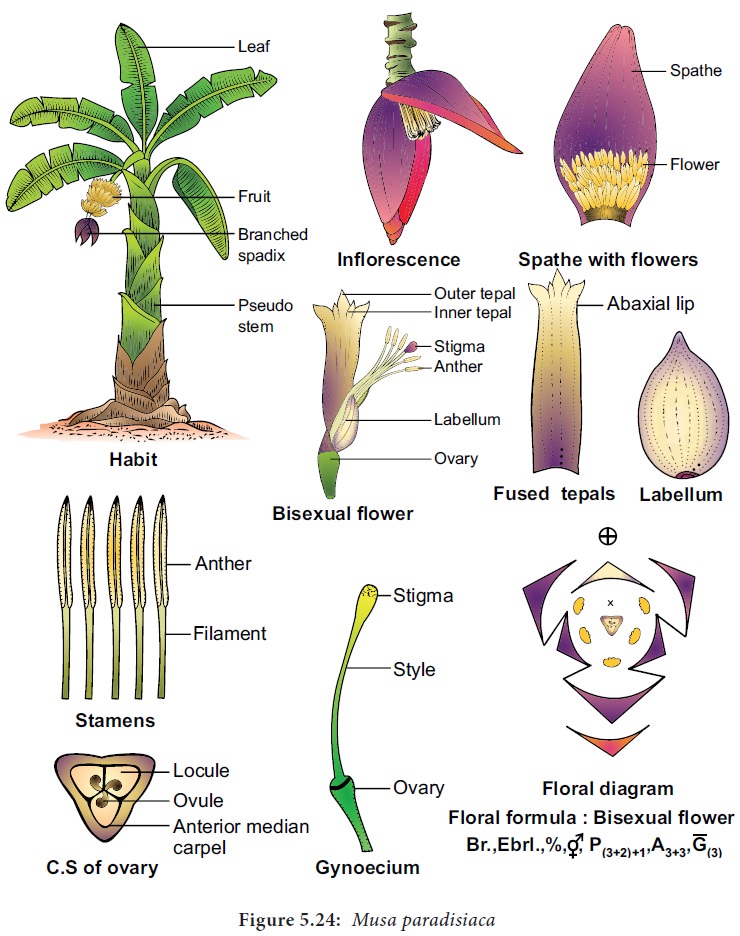
Inflorescence:
Terminal
branched spadix. Flowers are
protected by large, brightly coloured spirally arranged, boat shaped bracts
called spathe. When the flowers open, spathe rolls back and falls off.
Flower: Bracteate,
ebracteolate, sessile, trimerous,
unisexual or bisexual, flowers are zygomorphic and epigynous.
Perianth:
Tepals 6,
biseriate, 3+3 syntepalous, arranged
in two whorls of 3 each and homochlamydeous, the three tepals of the outer
whorl and the two lateral tepals of the inner whol are fused by valvate
aestivation to form 5 toothed tube like structure called abaxial lip, the
posterior inner median tepal is distinctly broad membrancus and free called
labellum.
Androecium:
Stamens
6, arranged in two whorls of 3 each,
arranged opposite to the tepals. Only five stamens are fertile and the inner
posterior stamen is either absent or represented by staminode. Anthers are
dithecous and they dehisce by vertical slits. Filament is simple and filiform
and rudimentary ovary or pistillode is often present in the male flower.
![]()
![]()
![]()
Gynoecium:
Tricarpellary,
syncarpous, the median carpel
anterior, trilocular, ovary inferior, numerous ovules on axile placentation.
Style is simple and filiform, stigma trilobed. Septal nectaries are present.
Fruit: An
elongated fleshy berry and seeds are
not produced in cultivated varieties.
Floral Formula
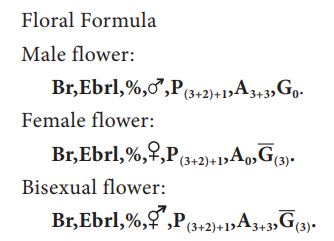
Economic Importance of The Family Musaceae
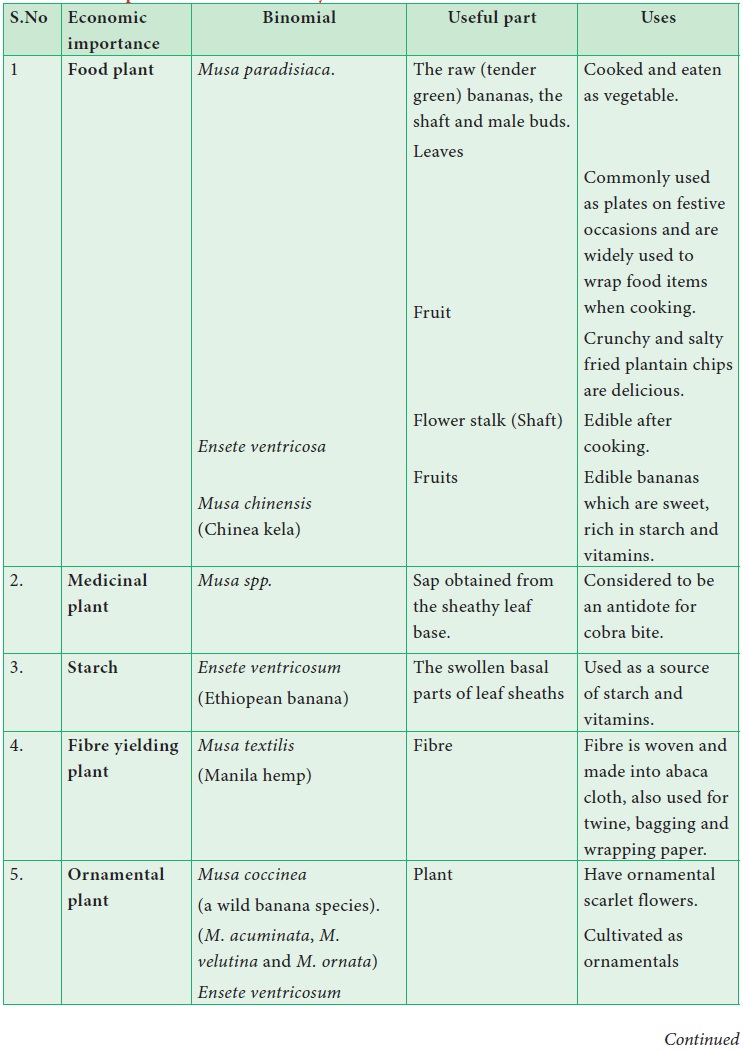

Related Topics
